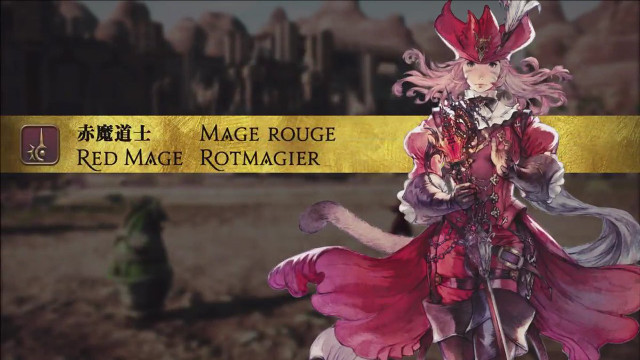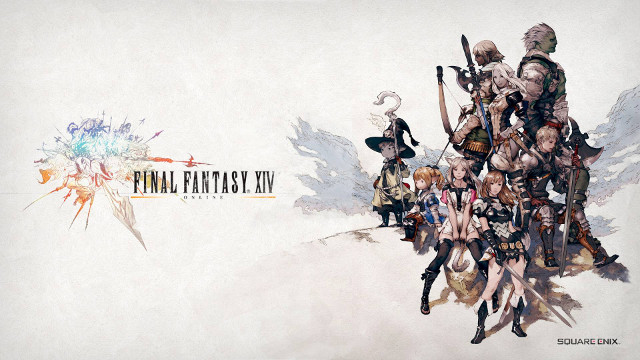When Final Fantasy XIV originally released in 2010, it did more harm than good for the Final Fantasy brand. It had one goal in mind: to modernize Final Fantasy XI. It failed on this mission with numerous painful missteps, many of which led to a jarring gameplay experience that was considered unacceptable by a large number of consumers, as indicated by its 49 Metascore, the worst of any game in the franchise's history.
As a Final Fantasy enthusiast, I was beyond the realm of disappointment, bordering on upheaval. If anything, I should have been won over by just about anything Square Enix could have produced; I was the target demographic for the game, equipped with a high-end PC, willing to endure long grinds, and appreciative of its unorthodox style. I would even go as far as to pre-order the Collector's Edition despite being underwhelmed by two beta weekends. Even then, I wouldn't last longer than three weeks, eventually canceling my subscription with the intention of never looking back.
Naturally, when Square Enix announced that it would revamp the title from the ground up, I was skeptical despite the concept screenshot (seen below) showing incredible promise. The game underperformed in virtually every area, to a point where I imagined a proper restructure to be impossible. I was wrong. As it would soon become known, Final Fantasy XIV: A Realm Reborn would more than prove that there was hope in sight, it was one of the greatest MMO releases of 2013.
A Realm Reborn addressed nearly everything that fans such as myself complained about with the original release: the user interface was no longer subject to significant input lag, combat was much more fluid, its world no longer consisted of copy pasted sections from sea to shining sea, and framerate performance wasn't oppressive. I could hardly believe my eyes.

Like many, during the next two years I would play hundreds of hours of A Realm Reborn, leveling up Paladin, Dragoon, Black Mage, and Ninja to level cap. It was like playing an entirely new game, although there were hints of its heritage that served as a reminder of its long—and painful—journey.
It would continue this success in 2015 with the release of Heavensward, an expansion that introduced three new jobs (Astrologian, Dark Knight, and Machinist), new areas, and a wealth of content. This expansion would build upon the strengths of the game while also addressing a few of its glaring weaknesses.
Also Read: Top 10 Most Popular MMOs – Did FFXIV Make the Cut?
Though, as much as I've enjoyed Final Fantasy XIV over the past four years, I'd be lying if I said it was perfect. When you look beyond its beautiful graphics, well-told story, and wealth of fan service flavor, you find a game as flawed as any. A few of these shortcomings have been around since its release, going unaddressed through dozens of patches, making myself and many others scratch our heads after seeing how the game has evolved so substantially through the years.
But just as Square Enix managed to tackle the problems of the original Final Fantasy XIV release, it is once again proving that it can make huge strides when given time.
 Square Enix hosts livestreams often to communicate to the community in a fun and informative way.
Square Enix hosts livestreams often to communicate to the community in a fun and informative way.Final Fantasy XIV producer Naoki Yoshida has been the mastermind behind the game's successful turnaround. Lately, he's been talking about addressing the core issues of Heavensward, a set of problems that keep the game from achieving its potential. Although it's been promising, much of it has been abstract. That is, until yesterday when he delivered the Letter from the Producer Live XXXVI, a live demonstration of what's to come in its upcoming expansion, Stormblood.
Alongside the release of a stunning new trailer showcasing the new skills and ability reworks of each job was confirmation of what Yoshida has been teasing for months regarding major restructuring of job mechanics and even the way skills interact with one another. The results have been anticipation-inducing among the community.
The rotation of each job has been revamped dramatically for the better. Perhaps the best example is the Black Mage, which during the length of Heavensward has had to deal with the cumbersome "uptime" design of a skill called Enochian, as if the job's poor mobility wasn't bad enough. In Stormblood, Enochian will function in a much more user-friendly manner, taking up considerably less attention during the average rotation. Made better, the job will have a new mobility oriented cooldown that is equally useful and flashy.
Similarly, the Paladin's main issues have been addressed. For the duration of Heavensward it's struggled to keep up with Warrior and Dark Knight primarily due to its inability to mitigate magical damage, which is prevalent among current era bosses. That's being changed as shield block will now apply to magic. A new Oath mechanic and offensive skills will come along for the ride, addressing long-held concerns that Paladin has a boring offensive toolkit.
These welcomed additions and adjustments are wide-sweeping, in some cases going as far as adding new options that players have been requesting for years. Such is the case of the Summoner's new Summon Bahamut skill, which will for the first time ever allow the job to call a full-sized, traditional Final Fantasy summon into battle. If you're a Ninja, you'll finally be able to play out your Naruto fantasies by turning into a massive frog and even combo-ing Mudras. Or, if you're more the Machinist type, you'll have access to a flamethrower.
And, of course, Red Mage and Samurai are still being added to the game, both of which look elegant in battle. I'd go as far as to say that Red Mage might just take the cake for being the most visually impressive job of any fantasy MMO (see the video above for gameplay footage).
Also Read: Square Enix Announced Paid Level Boosts and Story Skips for FFXIV
In addition, new job gauges were shown off for the first time ever. These will help visualize important mechanics for each job, moving combat design away from relying heavily on buff icons. For example, Dragoons will be able to track their Blood of the Dragon buff, while Monks can view their Greased Lightning stacks. Meanwhile, Bards can visibly see the duration of their songs.
There have been some other long-needed changes introduced, including the removal of the Class system; no longer will players need to level up several jobs to maximize their skill allotment. Instead, a group of skills will be immediately available to each of the three roles (DPS, Healer, Tank).
 The Red Mage being added is in direct response to Final Fantasy fans who admire the job.
The Red Mage being added is in direct response to Final Fantasy fans who admire the job.If you're a healer, doing damage will be much more intuitive. Cleric Stance is being completely reworked to instead function as a damage increasing cooldown, while Mind will take over Intelligence as your damage stat. If you're more the tank type, you'll find an AoE provoke called Ultimatum readily available.
On a personal note, one of my favorite additions coming in Stormblood are the new scenario shortcut items. As I wrote about yesterday, playing catch-up with the main scenario missions is extremely time consuming, resulting in a barrier that keeps many casual players away. This is being addressed with a purchaseable item that will allow players to jump passed all the nonsense and immediately enjoy the content of the new expansion.
All these changes and additions demonstrate that Square Enix has been mindful of what fans want from Final Fantasy XIV. This is no longer a company out of touch with its playerbase. Instead, it takes feedback into consideration, harnessing it to improve the game in the most meaningful ways. As a veteran player who witnessed the disaster of its original launch, it's an incredible sight to bear witness to.
I've never seen a game come so far, traveling from the depths of failure to become one of the best examples of its respective genre with millions of enthusiastic players. It's an incredible success story unlike any other, and for that Square Enix deserves praise.







